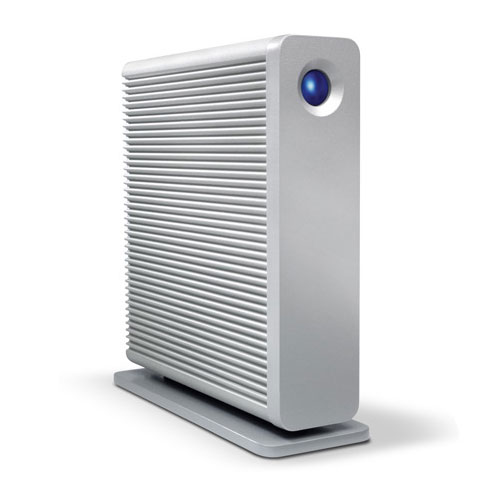

- LACIE NETWORK ASSISTANT WINDOWS FOR MAC OS
- LACIE NETWORK ASSISTANT WINDOWS MANUAL
- LACIE NETWORK ASSISTANT WINDOWS REGISTRATION
- LACIE NETWORK ASSISTANT WINDOWS PASSWORD
- LACIE NETWORK ASSISTANT WINDOWS WINDOWS
HFS+ is slower at writing whereas FAT32 and NTFS are only half as fast as EXT4. Surprisingly, the external disk is faster than the internal one! This may be due to the different controllers (the eSATA port is based on a JMicron chip whereas the internal SATA ports are based on the main processor) or the influence of the system partition on the internal HDD. Of course, eSATA is a more interesting option, even though you can only connect one eSATA device at a time.
LACIE NETWORK ASSISTANT WINDOWS FOR MAC OS
As for Mac OS users, they will have to put up with the low write speed of HFS+ or choose another file system.
LACIE NETWORK ASSISTANT WINDOWS WINDOWS
We can note that the 2big NAS is as good with EXT4 as with NTFS partitions when using USB 2.0, so Windows users won’t have to look for a compromise between speed and compatibility. We can’t expect high performance from USB 2.0, so 30 MB/s is quite normal. We used the mentioned drive from WD for this test. The next two diagrams show the data-transfer speed with external drives connected to the 2big NAS. On the other hand, these HDDs are not on the official compatibility list. The 2big NAS is somewhat slower with the WD drives, especially with the single drive. Take note that there is almost no difference between the different RAID types.Īnd here are the results with the WD drives installed. The NAS is going to be fast enough for home and SOHO applications. The results are appropriate for the hardware platform. Interestingly, the manufacturer uses the same benchmark to specify the product’s performance. The peak sequential read and write speeds are 100 and 70 MB/s, respectively. The first diagram shows the NAS’s performance with the default HDDs from Seagate. The 2big NAS not supporting Jumbo Frames, we didn’t change any settings after creating a disk array on it. Besides the default HDDs (Seagate Barracuda ST3000DM001), we checked it out with Western Digital Caviar Black WD5001AALS drives. We tested the performance of our LaCie 2big NAS with Intel NASPT.
LACIE NETWORK ASSISTANT WINDOWS PASSWORD
When the NAS is turned on for the first time, you are asked to set up its network name, admin password and internal clock. By the way, the NAS has a password recovery system similar to many websites: the user receives an email with a link to apply a new password. Besides the administrator, ordinary users can access the interface, too, but only to change their password. The 2big NAS lacks a full-featured help system but has popup hints for most options and links to the manufacturer’s website for some features.
LACIE NETWORK ASSISTANT WINDOWS REGISTRATION
There are a lot of links to the manufacturer’s online resources, including tech support and product registration pages. Except for the main page with settings, you can have multiple info widgets in the interface window, for example widgets with network settings, disk array status or external drive information. It has a fixed-size design which is modern and engaging. The interface supports HTTPS and is available in several languages. The included LaCie Network Assistant tool can help you find the NAS on your network, mount network disks, change the network address, and evoke the NAS’s web-interface for more configuring. This indication system isn’t very handy because you have to check out indicators located on opposite panels of the case.
LACIE NETWORK ASSISTANT WINDOWS MANUAL
The user manual contains a table that describes the meaning of each indicator combination such as a disk failure or overheat. You can turn it off in the NAS’s settings but it will blink or shine red in case of problems irrespective of that setting. As for the front panel, there is only one large blue LED on it. The network and disk indicators are at the back and won’t distract you with their blinking. You can remove the stand if you don’t need it. The Ethernet connector should have also been placed next to the power one because they are both going to be used in every usage scenario. The latter is conveniently placed at the bottom of the back panel. There’s a large indicator button on the front panel that can switch the NAS into sleep mode and wake it up.Īt the back of the case we can see a small vent grid, HDD bays with locks, a power switch (it can be used to turn the NAS off safely), a Gigabit Ethernet port, USB 2.0 and eSATA connectors for external devices, and a power connector. The case is rather small for a dual-disk NAS at 9 x 20 x 18.5 centimeters (with the stand).

The case is made of aluminum and has a characteristic radiator surface with lengthwise fins that ensure improved cooling. Developed by Neil Poulton, the designer of most of LaCie storage products, the exterior of the 2big NAS differs from typical NASes with its original and easily recognizable style.


 0 kommentar(er)
0 kommentar(er)
